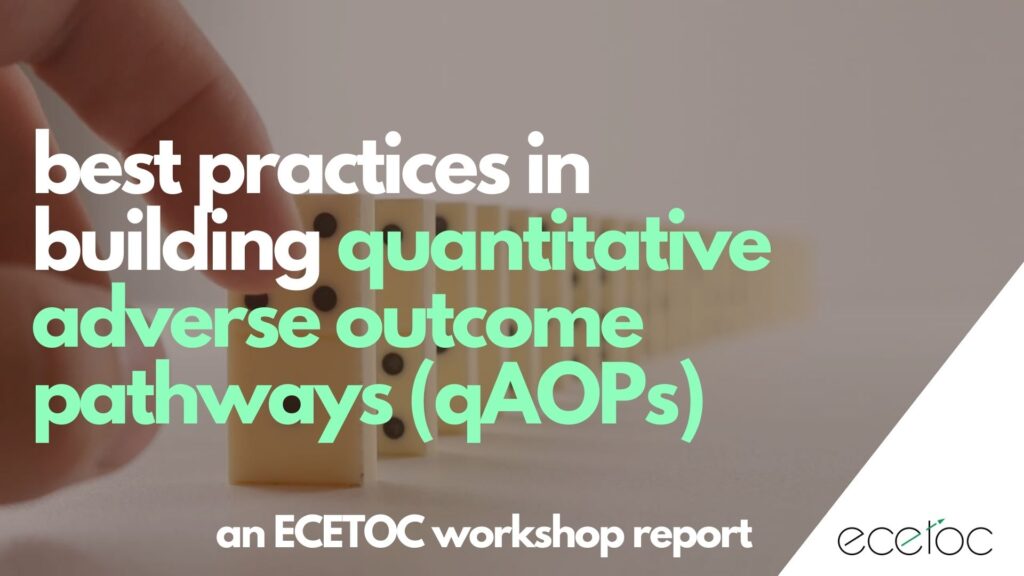Scientists discuss how Quantitative Adverse Outcome Pathways can be used more effectively in EU chemical safety assessments
Brussels, 13 February 2024 – Toxicologists, biologists, and computational modellers came together at a workshop organised by the Centre for chemical safety assessment (ECETOC) to discuss how to develop and integrate quantitative Adverse Outcome Pathways (AOP) into EU chemical safety assessments (read the report here).
AOPs are scientific ‘roadmaps’ that can be used to understand how exposure to a substance or a stressor leads to a negative effect on living organisms or ecosystems. They are a way to connect the dots between an initial molecular or cell level and any eventual harm that might occur in an organism or ecosystem. They are particularly useful for organising data obtained from in silico, in vitro and in vivo experiments, across different levels of biological complexity.
An AOP starts with an event at a molecular level, such as exposure to a chemical. This is known as a molecular initiating event (MIE) and can trigger a chain reaction in the biological system. The key events (KEs) that follow are the critical steps or changes that occur in response to the initial exposure, each step influencing the next. These happen at different levels of biological organisation, such as the cellular or tissue level – and together the key events form a pathway, outlining the biological responses and changes that take place. Finally, the molecular and biological changes may lead to an adverse outcome, which can be anything from impaired growth to reproductive issues in organisms or damage to ecosystems.
AOPs are useful for developing and integrating new approach methodologies (NAMs), such as in vitro toxicity tests measuring molecular disruption after exposure to a stressor, with computational approaches. AOPs can also contribute to improving chemical safety assessments by identifying data gaps and so prioritising research.
However, for higher tier risk assessments, the current AOP framework presents several issues, including:
- From a qualitative point of view, existing AOPs give incomplete coverage of common toxicities, and knowledge of toxic mechanisms is also incomplete.
- Current and emerging regulatory concerns, such as those related to developmental neurotoxicity, often require making predictions about effects on humans where there are no established in vivo model systems.
- Most existing AOPs are not quantitative. Theoretically, in vitro toxicity experiments can be used to estimate a dose that triggers an MIE, but the threshold triggering the downstream KEs leading to adversity is difficult to quantify.
For safety assessments, quantitative AOPs (qAOPs) allow scientists to use numbers and models to make predictions about how a living system will respond to different amounts of a chemical – and so predict how likely, or how severe any adverse outcomes may be. The two-day ECETOC workshop (held in October 2022) therefore focused on three questions focusing on the human health aspects of qAOPs:
- What is the most appropriate modelling approach?
- What level of biological detail is necessary to include in a qAOP?
- How do we ensure the quality and accessibility of qAOP models and their prediction?
Participants made a number of recommendations for implementing qAOPs in risk assessments. They agreed that qAOPs had great potential to advance risk assessments, helping scientists assess the impact of molecular changes observed in non-animal studies on organisms, or populations. qAOPs establish connections between early and downstream biological events and, in combination with quantitative in vitro-in vivo extrapolation (QIVIVE) using physiologically based kinetic (PBK) modelling, enable the creation of in vivo dose-response curves for risk assessment.
Despite their potential, qAOPs haven't yet been used in non-animal model-based risk assessment. The workshop therefore called for case studies, reviewed by regulatory bodies, to validate qAOPs.
The experts also noted that there are currently no published standards available to characterise and validate qAOPs, although efforts are underway to develop model evaluation guidance through a qAOP working group within the EU Horizon 2020 funded Animal-free Safety assessment of chemicals (ASPIS) project cluster. The group aims to develop guidance on how to evaluate these models.
Finally, education programs are crucial for stakeholders to understand the complex qAOP modeling approach.

